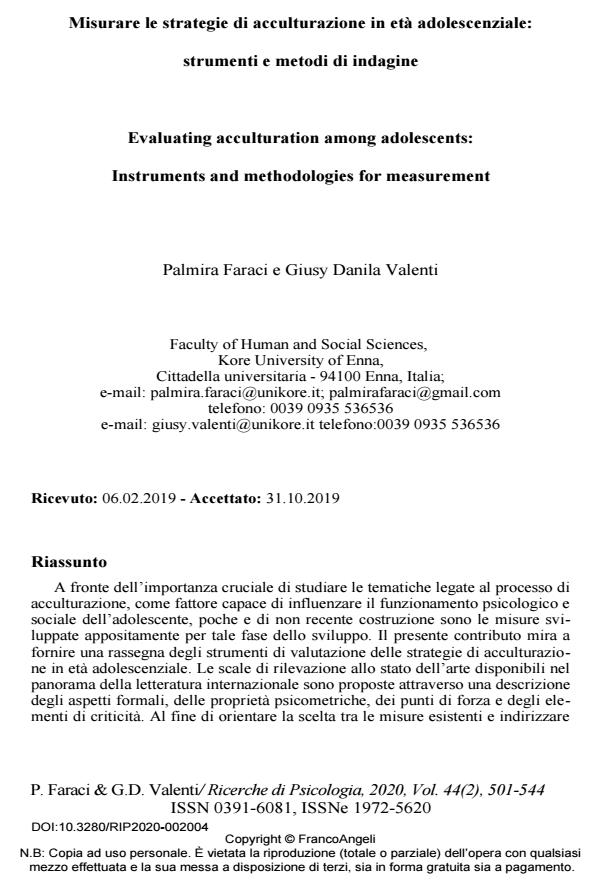Evaluating acculturation among adolescents: Instruments and methodologies for measurement
Journal title RICERCHE DI PSICOLOGIA
Author/s Palmira Faraci, Giusy Danila Valenti
Publishing Year 2020 Issue 2020/2
Language Italian Pages 44 P. 501-544 File size 346 KB
DOI 10.3280/RIP2020-002004
DOI is like a bar code for intellectual property: to have more infomation
click here
Below, you can see the article first page
If you want to buy this article in PDF format, you can do it, following the instructions to buy download credits

FrancoAngeli is member of Publishers International Linking Association, Inc (PILA), a not-for-profit association which run the CrossRef service enabling links to and from online scholarly content.
Although a wide literature has highlighted the importance of studying the ac-culturation processes and its implications as a risk factor for the psychosocial adaptation, currently, very few instruments developed on ad hoc basis for adolescents are available. The present paper offers a review of the instruments for evaluating acculturation among adolescents. Based on an international literature-based analysis, structural features, psychometric qualities, strengths and points of weakness are indicated for each presented measure. Psychometric fea-tures, which needs to be gathered in order to advance assessment methods and techniques in this area, are discussed to help both choosing among existing measures and promoting research aimed to the development of specifically designed measures.
Keywords: Acculturation, integration, instruments, measures, adolescents.
Palmira Faraci, Giusy Danila Valenti, Misurare le strategie di acculturazione in età adolescenziale: strumenti e metodi di indagine in "RICERCHE DI PSICOLOGIA " 2/2020, pp 501-544, DOI: 10.3280/RIP2020-002004